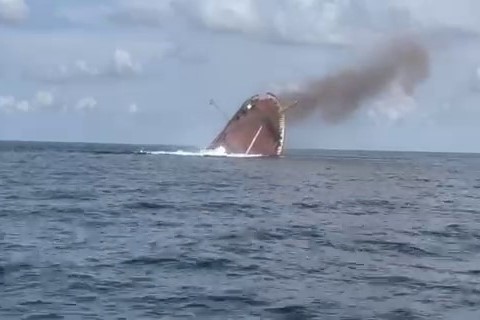The US Air Force (USAF) has successfully demonstrated a new low-cost method for neutralizing surface vessels with an air-delivered strike known as QUICKSINK.
The test took place in the Gulf of Mexico near Eglin Air Force Base during RIMPAC 2024, the world’s largest international maritime exercise, which involved 29 nations and over 25,000 personnel.
During the test, a B-2 Spirit stealth bomber successfully sank the M/V Monarch Countess, a decommissioned cargo vessel now resting 180 feet (54 meters) below the water off the coast of Destin-Fort Walton Beach, Florida.
This demonstration was part of the USAF’s ongoing Maritime Weapon Program in partnership with the US Navy. QUICKSINK is a Weapon Open Systems Architecture (WOSA) seeker that enables precise targeting, enhancing the effectiveness of maritime strikes using air-launched weapons such as precision-guided bombs.
“The development of this technology helps deliver technological superiority to ensure the United States can defend our interests, maintain freedom of action, and seize the initiative over large maritime areas,” said Colonel Matthew Caspers, Air Force Research Laboratory, Munitions Directorate Director.
QUICKSINK technology addresses the need to quickly and efficiently neutralize maritime threats across vast ocean areas. Unlike traditional submarine-launched torpedoes, which risk revealing the submarine’s location, QUICKSINK offers a high-speed, air-delivered solution that can cover larger areas and respond rapidly to threats.

